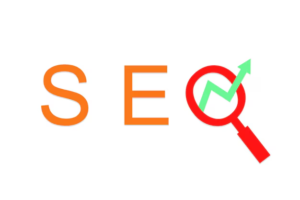Search engine optimization is one of the most effective ways to generate online leads for your pest control company. SEO leverages a website’s existing and new content to increase your digital visibility and attract more online traffic. Contact Ironchess SEO + Marketing now!
Offsite SEO focuses on earning backlinks from reputable and relevant 3rd party websites. Think of these links as votes in a popularity contest; the more quality votes your pest control website gets, the higher it ranks.

In today’s digital era, when someone needs pest control services, they often search online. This is why Pest Control SEO has become an important aspect of a business’s online marketing strategy. By optimizing their websites with relevant keywords and high-quality content, pest control companies can increase their visibility on search engine results pages (SERPs) and attract more qualified leads.
Effective Pest Control SEO starts with understanding your business’s goals and target customers. This will help you determine which keywords will most likely drive traffic and conversions. Then, you can create engaging, informative content that aligns with these keyword phrases. This will help you establish yourself as an authority in your field, attract new audiences, and grow your business.
To start your pest control SEO journey, identify the most important keywords that capture the essence of your business. These can be broad keywords like “pest control,” or more specific keywords, such as “exterminator,” “termite treatment,” or “rodent removal.” Once you’ve identified your core keywords, you can begin to expand your search by focusing on more niche keywords.
Another important step in pest control SEO is understanding user intent. This is the purpose behind people’s searches, and it’s crucial for determining which keywords to target. For example, if someone searches “how to get rid of roaches,” they likely have a general intent in mind, such as learning more about cockroaches or finding home remedies for them. However, if someone searches “Fox Pest Control,” they probably have more specific intent in mind, such as searching for a local pest control company or needing advice on dealing with a particular infestation.
Finally, it’s important to keep in mind that keyword research is an ongoing process that requires regular evaluation and refinement. You should always be experimenting with different ways to incorporate your core keywords into your website’s content, and you should also be keeping an eye on metrics such as bounce rates and time on site to see how well your content is performing.
As you continue to improve your pest control SEO, you’ll be able to see positive results in the form of increased organic rankings and web traffic. While it’s possible to do your pest control SEO in-house, hiring a professional agency can save you time and money and ensure that your campaign is successful.
On-Page Optimization
Search engines are the first place most customers look when looking for a pest control company. Using on-page optimization, you can ensure that your website shows up at the top of SERPs for relevant searches and attracts qualified leads. On-page optimization includes a variety of techniques, from keyword density to URL structure.
Your meta title, which appears as the headline on a SERP, is one of the most important elements of your website. It needs to contain your primary keyword and convey the relevance of the page content. Meta descriptions, which appear below the title tag on SERPs, are also important for attracting clicks. Ensure that your description includes a call to action that will prompt visitors to make a phone call or fill out a contact form.
SEO-optimized images are a must for any modern website, and pest control is no exception. Optimizing images to be smaller in file size without sacrificing quality is a simple way to improve your site’s speed and search engine ranking.
Use keyword-optimized alt text to describe each image on your site, and be sure that your images are properly tagged and labeled. These tags are read by both human and robot crawlers to understand what your image is about, so be sure to include the relevant keywords.
Regularly publish SEO-optimized blog content to keep your website’s information fresh for both visitors and Google. This practice improves site relevance, and also signals to Google that your site is active.
Ensure that your NAP (name, address, phone number) is correct on all online listings and aggregator sites, such as Yelp, Apple Maps, Bing Places, etc. Update these listings when they change, and fix incorrect ones as soon as possible.
Showcase glowing testimonials from satisfied clients to build credibility and trust for your business. Feature them on your website using DemandHub’s Free Review Badge, and be sure to link to the original source when available. Local search is particularly important for pest control businesses, and leveraging strategies like geo-targeting can help your business stand out in search results for searches within your service area.
Link Building
If your pest control company’s website isn’t visible at the top of Google searches, you’re missing out on valuable customers and leads. Mastering SEO best practices – including on-page optimization and off-page strategies – helps position you for long-term, sustainable organic search visibility. According to Smart Insights, sites listed on Page 1 of Google see click rates up to 500% higher than those buried in the second or third pages. Committing to championing organic search visibility today sets your business up for an enduring competitive advantage as consumer behavior and sophisticated new technologies emerge.
Optimize on-page content for targeted keywords to improve your rankings within relevant SERPs. This includes ensuring that your landing pages contain clear and relevant information, such as a list of services offered, the types of pests you treat, and a detailed overview of pest prevention. Embedding videos, infographics, and galleries further enhances the user experience on your website while boosting your SEO performance.
Off-page SEO techniques like link building help position your site for organic search visibility. Techniques include guest posting on recognized industry sites, writing informative articles on your area of expertise, and participating in local events to garner quality backlinks from other websites. These links, in turn, boost your SEO ranking, helping to drive qualified traffic to your site.
Creating profiles on lead generation websites like Thumbtack, HomeAdvisor, and Angi further expands your visibility to customers in need of your services. These platforms match you with prospective customers who have specific pest issues, allowing them to view your reviews and contact information. Displaying glowing testimonials from past clients on your website further builds trust and credibility, boosting conversion rates.
Implementing the right SEO strategies takes time, resources, and a deep understanding of your target audience and market. To maximize your ROI, consider working with an experienced digital marketing agency that specializes in pest control SEO. Agencies like Comrade Digital Marketing provide comprehensive, customized strategies leveraging both on-page and off-page SEO tactics. Contact us today to learn how we can help your pest control company dominate the competition and drive more qualified sales leads.
Content Creation
While keyword research and on-page optimization are critical components of a pest control SEO strategy, content marketing is what will truly attract new clients and establish your authority in the field. High-quality content that answers your audience’s questions and provides them with valuable information positions you as an expert, generates engagement, and drives conversions. This can be achieved by writing sharable blog posts, creating informative landing pages, or simply posting useful tips on social media. It is also essential to make sure that your content is properly optimized and contains no grammatical errors – while this may seem like an obvious point, it sends a message of professionalism and expertise to search engines.
Titles and meta descriptions act as the welcoming mat of your digital storefront, and they need to be enticing enough to draw potential customers in. A well-crafted title and description will incorporate relevant keywords without sounding robotic or artificial, and it will help search engines determine the relevance of your page. Additionally, making sure your images are labeled with descriptive alt text will boost visibility in image searches as well as improve accessibility for the visually impaired.
A comprehensive pest control marketing strategy will also include the promotion of your brand through social media, email blasts, and local listings services like Yext. This will not only increase your reach, but it will also help to drive local traffic and enhance your ranking. Local rankings are especially important for pest control companies, as they operate within specific service areas.
As you continue to create engaging, informative, and sharable content, your website will begin to rank higher in search engine results pages (SERPs), which will in turn drive more organic traffic and leads. Achieving and maintaining a top position in SERPs can ultimately lead to long-term customer retention, referral business, and even brand loyalty.
While some pest control businesses choose to manage their SEO in-house, others prefer to work with a professional SEO agency that can offer the full spectrum of technical and creative services to supercharge their natural search visibility. A reputable pest control SEO partner will have extensive industry experience and can provide strategic recommendations to ensure that your campaign is achieving the best possible results.
